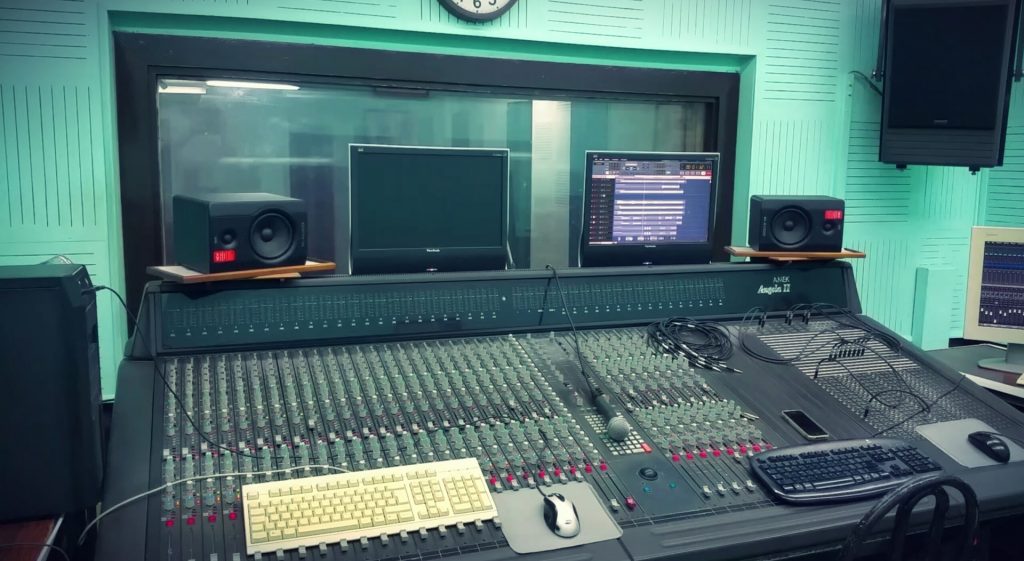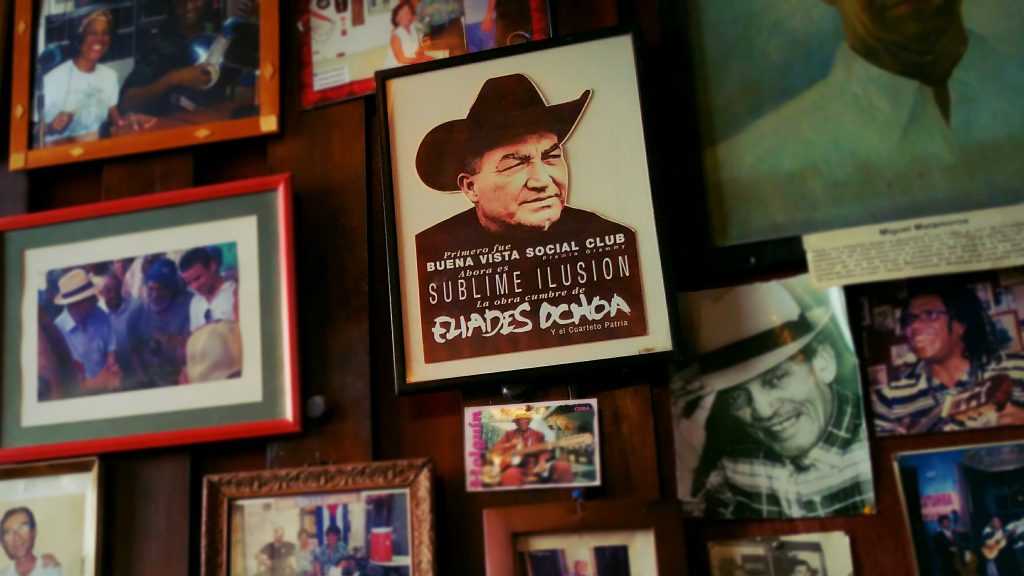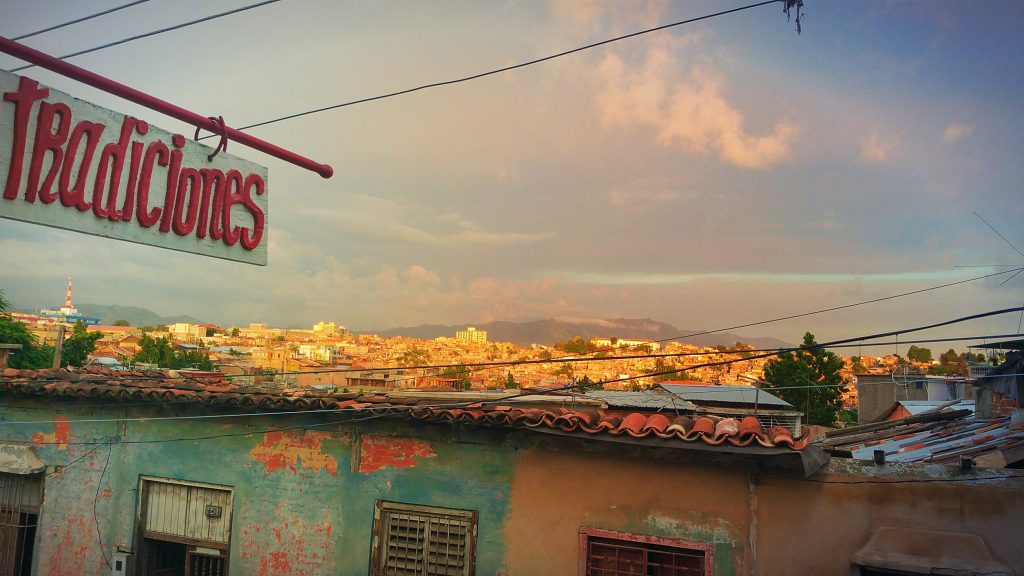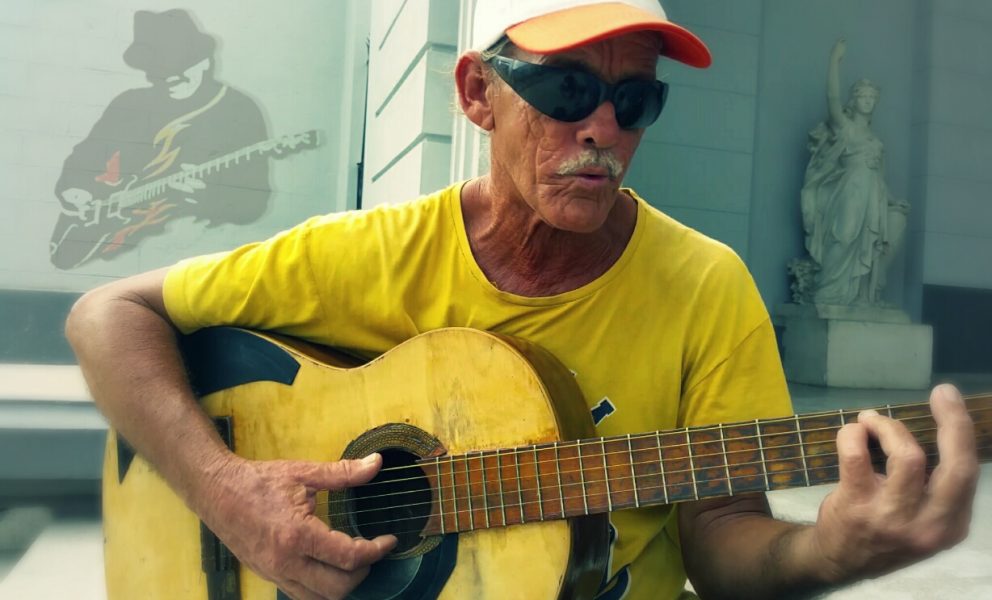Habanera & the Cuban Woman Who Defied the Odds

[vc_row][vc_column][vc_column_text]
It’s been a weekend of thrills and spills after meeting Eliades Ochoa and sitting in on a recording session at Egrem.
I’ve now moved from Hostal Girasol to a casa particular, so me and Cuban singer-songwriter, Xiomara Vidal, will continue our journey through Cuban music genres in fresh surroundings.
[/vc_column_text][vc_separator color=”green”][/vc_column][/vc_row][vc_row][vc_column][vc_custom_heading text=”Moving Lodgings” font_container=”tag:h1|text_align:center” google_fonts=”font_family:Lobster%3Aregular|font_style:400%20regular%3A400%3Anormal” css=”.vc_custom_1466026280120{margin-top: 0px !important;}”][vc_custom_heading text=”Casa Carlos y Caridad” font_container=”tag:h2|text_align:center” google_fonts=”font_family:Lobster%3Aregular|font_style:400%20regular%3A400%3Anormal” css=”.vc_custom_1592857083188{margin-top: 0px !important;}”][vc_row_inner el_id=”Casa Carlos y Caridad”][vc_column_inner width=”2/3″][vc_column_text]
Having spent a month in Santiago de Cuba, I’ve become familiar with the city and have found a few cheaper places further from the centre.
There are many casa particulars to choose from, but nowhere could quite touch Casa Carlos y Caridad. The house sits at the top of the hill in Tivoli near Museo de la Lucha Clandestina.
Carlos and his family have welcomed me warmly into their home and he speaks a little bit of English, which can help rescue some conversations. The house has one of the highest roof terraces in Santiago de Cuba, with fantastic views of the entire city and the bay.
I’ve come up to the terrace today to get a bit of practice in before Xiomara arrives. Soon enough, I see her walking up the hill towards the house with her guitar. She’s slap, bang on time as usual.
[/vc_column_text][/vc_column_inner][vc_column_inner width=”1/3″][vc_single_image image=”2826″ img_size=”full” add_caption=”yes” alignment=”center” onclick=”link_image”][/vc_column_inner][/vc_row_inner][vc_single_image image=”598″ img_size=”full” add_caption=”yes” alignment=”center” onclick=”link_image”][vc_column_text]
I answer the door and we exchange the usual kiss on both cheeks. It’s usually just one in Cuba, but the first time we met I played it safe and went for two. It has now become a bit of trademark and I suspect Xiomara thinks this is how we do it in the UK.
I tell her about my tour of Egrem Siboney recording studio, how much it exceeded my expectations, and thank her for arranging it for me. She smiles and says I’m more than welcome.
But Xiomara doesn’t look so chirpy today. She’s suffering from a bad case of catarrh. But like the trooper that she is, she wont let that get in the way of the lesson.
I give her the guided tour and we set up shop in our new place in the sky. As has become traditional, she places her guitar case on the table and lights a cigarette before the lesson.
Today, we’ll be looking at the habanera genre, through a song composed by one of her biggest influences, Maria Teresa Vera. She has brought an old newspaper article with frayed edges, which looks a bit like a treasure map. She wants me to understand some of the background of her musical idol.
[/vc_column_text][vc_separator color=”green”][/vc_column][/vc_row][vc_row top_margin=”0″ bottom_margin=”0″ el_id=”Maria Teresa Vera”][vc_column][vc_custom_heading text=”Maria Teresa Vera” font_container=”tag:h1|text_align:center” google_fonts=”font_family:Lobster%3Aregular|font_style:400%20regular%3A400%3Anormal” css=”.vc_custom_1465598033882{margin-top: 0px !important;}”][vc_custom_heading text=”The Immortal Troubador” font_container=”tag:h2|text_align:center” google_fonts=”font_family:Lobster%3Aregular|font_style:400%20regular%3A400%3Anormal” css=”.vc_custom_1592857122534{margin-top: 0px !important;}”][vc_column_text]
This newspaper cutting that Xiomara has brought tells the story of Maria Teresa Vera, one of the most important personalities in Cuban traditional music and culture.
Xiomara says the article is too delicate, and too dear to her, to let it out of her sight. But she carefully unfolds it and places it on her guitar case so that I can take some photos. She holds it down as the edges flutter in the breeze washing over the terrace.
I have since translated this very rare article and used excerpts to create a brief biography of Maria Teresa Vera.
[/vc_column_text][vc_row_inner][vc_column_inner width=”1/2″][vc_single_image image=”2810″ img_size=”full” alignment=”center” onclick=”link_image”][/vc_column_inner][vc_column_inner width=”1/2″][vc_single_image image=”2811″ img_size=”full” alignment=”center” onclick=”link_image”][/vc_column_inner][/vc_row_inner][vc_column_text]
Daughter of an Afro-Cuban woman and a Spaniard, she was born in Guanajay, days before the war of 1895.
She began her career aged 16, performing Manuel Corona‘s song ‘Mercedes” before the public. Corona, who was one of the 4 founders of the trova style, was also her guitar teacher, following José Díaz and Patricio Ballagas.
Her mentors nurtured in her an enduring and singular love for her guitar, which fast became her soul mate.
[/vc_column_text][vc_row_inner][vc_column_inner width=”1/2″ css=”.vc_custom_1465867680802{background-color: rgba(0,0,0,0.15) !important;*background-color: rgb(0,0,0) !important;}”][vc_column_text]
‘Corona’s style seemed perfect to me. I was Corona’s friend until he died and I’m a faithful disciple of his teachings and unique style. I wanted to make his songs live on forever.’
Maria Teresa Vera
[/vc_column_text][/vc_column_inner][vc_column_inner width=”1/2″ css=”.vc_custom_1465867715161{background-color: rgba(0,0,0,0.15) !important;*background-color: rgb(0,0,0) !important;}”][vc_column_text]
‘The day Machado fell, there was a plundering in Havana. When it began, she said to me: “Come and help rescue my life”. I said: “Where?” She replied: “I need to get my guitar”.’
Delia Vera (her niece)
[/vc_column_text][/vc_column_inner][/vc_row_inner][vc_row_inner][vc_column_inner][vc_empty_space][/vc_column_inner][/vc_row_inner][vc_column_text]
Her artistic journey was marked by many great achievements, including numerous trips to the United States to record with RCA, Pathé and Columbia. She played mainly in duos with Rafael Zequeira, Miguel García and Lorenzo Hierrezuelo, moving briefly into a quartet and then a sextet, working alongside son pioneer, Ignacio Piñeiro.
After the revolution of 1959, her contributions were finally recognised. She was named a Daughter of Guanajay, and in 1961 the National Council of Culture offered her a grand homage in the Municipal Amphitheater.
However, in order to achieve this success, she had many social obstacles to overcome.
[/vc_column_text][vc_row_inner][vc_column_inner][vc_separator color=”green” el_width=”20″][vc_custom_heading text=”Confronting & Overcoming Prejudices” font_container=”tag:h2|text_align:center” google_fonts=”font_family:Lobster%3Aregular|font_style:400%20regular%3A400%3Anormal” css=”.vc_custom_1592857724586{margin-top: 0px !important;}”][vc_column_text]
Maria had begun her career during a time in Cuba when women were not welcomed into the music business. Xiomara tells me that at first, women had to write their songs from the perspective of a man, to disguise that they had been written by a woman.
Racial prejudices were also present in the society. Once, Maria was invited by white friends to an ice-cream parlour, but the staff refused to serve her. One of her friends had tried to pass on their ice cream, but the waiter withdrew it. She and her friends left immediately.
The resilience and determination of this special character continues to inspire many female musicians, in Cuba and beyond. And her legacy is kept alive by another Cuban trovadora from the Casa de la Trova, Xiomara Vidal.
[/vc_column_text][/vc_column_inner][/vc_row_inner][vc_separator color=”green”][/vc_column][/vc_row][vc_row top_margin=”0″ bottom_margin=”0″ el_id=”habanera Veinte Anos”][vc_column][vc_row_inner][vc_column_inner][vc_custom_heading text=”‘Veinte Años (20 Years)'” font_container=”tag:h1|text_align:center” google_fonts=”font_family:Lobster%3Aregular|font_style:400%20regular%3A400%3Anormal” css=”.vc_custom_1594338512596{margin-top: 0px !important;}”][vc_custom_heading text=”The Classic Habanera” font_container=”tag:h2|text_align:center” google_fonts=”font_family:Lobster%3Aregular|font_style:400%20regular%3A400%3Anormal” css=”.vc_custom_1592857869894{margin-top: 0px !important;}”][vc_column_text]
Maria Teresa Vera became one of the most popular proponents of the classic trova repertoire, and wrote 26 of her own compositions. Her most famous was the habanera, ‘Veinte Años’, with lyrics written by Cuban poets Guillermina Aramburo and Emma Núñez.
Xiomara stresses that the habanera is one of the most important roots in the Cuban musical family tree.
She folds away her article into a protective plastic sheet and places it in the pocket of her guitar case. She takes out her acoustic guitar and sits opposite me, with the Sierra Maestra mountain range behind her.
Here is her interpretation of this habanera classic, ‘Veinte Años’.
(You may have to turn English subtitles on, depending on your browser)
[/vc_column_text][vc_video link=”https://youtu.be/6MjIdc2YMKM” align=”center”][vc_raw_html]JTNDc2NyaXB0JTIwc3JjJTNEJTIyaHR0cHMlM0ElMkYlMkZhcGlzLmdvb2dsZS5jb20lMkZqcyUyRnBsYXRmb3JtLmpzJTIyJTNFJTNDJTJGc2NyaXB0JTNFJTBBJTBBJTNDc2NyaXB0JTNFJTBBJTIwJTIwZnVuY3Rpb24lMjBvbll0RXZlbnQlMjhwYXlsb2FkJTI5JTIwJTdCJTBBJTIwJTIwJTIwJTIwaWYlMjAlMjhwYXlsb2FkLmV2ZW50VHlwZSUyMCUzRCUzRCUyMCUyN3N1YnNjcmliZSUyNyUyOSUyMCU3QiUwQSUyMCUyMCUyMCUyMCUyMCUyMCUyRiUyRiUyMEFkZCUyMGNvZGUlMjB0byUyMGhhbmRsZSUyMHN1YnNjcmliZSUyMGV2ZW50LiUwQSUyMCUyMCUyMCUyMCU3RCUyMGVsc2UlMjBpZiUyMCUyOHBheWxvYWQuZXZlbnRUeXBlJTIwJTNEJTNEJTIwJTI3dW5zdWJzY3JpYmUlMjclMjklMjAlN0IlMEElMjAlMjAlMjAlMjAlMjAlMjAlMkYlMkYlMjBBZGQlMjBjb2RlJTIwdG8lMjBoYW5kbGUlMjB1bnN1YnNjcmliZSUyMGV2ZW50LiUwQSUyMCUyMCUyMCUyMCU3RCUwQSUyMCUyMCUyMCUyMGlmJTIwJTI4d2luZG93LmNvbnNvbGUlMjklMjAlN0IlMjAlMkYlMkYlMjBmb3IlMjBkZWJ1Z2dpbmclMjBvbmx5JTBBJTIwJTIwJTIwJTIwJTIwJTIwd2luZG93LmNvbnNvbGUubG9nJTI4JTI3WVQlMjBldmVudCUzQSUyMCUyNyUyQyUyMHBheWxvYWQlMjklM0IlMEElMjAlMjAlMjAlMjAlN0QlMEElMjAlMjAlN0QlMEElM0MlMkZzY3JpcHQlM0UlMEElMEElM0NkaXYlMjBjbGFzcyUzRCUyMmcteXRzdWJzY3JpYmUlMjIlMjBkYXRhLWNoYW5uZWxpZCUzRCUyMlVDWGxMY1JvUV9LcGxKdEZlSzk5NGIzZyUyMiUyMGRhdGEtbGF5b3V0JTNEJTIyZnVsbCUyMiUyMGRhdGEtY291bnQlM0QlMjJoaWRkZW4lMjIlMjBkYXRhLW9ueXRldmVudCUzRCUyMm9uWXRFdmVudCUyMiUzRSUzQyUyRmRpdiUzRQ==[/vc_raw_html][vc_separator color=”green”][/vc_column_inner][/vc_row_inner][vc_custom_heading text=”The Habanera” font_container=”tag:h1|text_align:center” google_fonts=”font_family:Lobster%3Aregular|font_style:400%20regular%3A400%3Anormal” css=”.vc_custom_1465597496626{margin-top: 0px !important;}”][vc_column_text]
The habanera originated from the English contradance, which had been spiced up a bit in France and Spain under the name contradanza, before arriving in Cuba.
Once let loose in Cuba, African polyrhythms were added to this multicultural stew, resulting in a more syncopated rhythm. The tone of this new genre’s melody, and its lyrics, were much more mournful. It was also complemented by a slower, more graceful dance form.
[/vc_column_text][vc_row_inner el_id=”habanera tresillo”][vc_column_inner width=”1/2″][vc_column_text]
The Afro-Cuban rhythmic cell, called the tresillo, is what made all the difference.
This rhythmic foundation is fundamental to habanera and tango rhythms, later fuelled the danzón, chachacha and mambo genres, and is also found in the 3-side of the son clave pattern.
The trick works by setting odd and even time divisions against each other, as this clever visualisation shows.
I’ve added a guitar pattern so you can hear how the guitar follows it. A habanera guitar course is in the pipeline, so sign up below to be updated when it’s available.
[/vc_column_text][/vc_column_inner][vc_column_inner width=”1/2″][vc_video link=”https://youtu.be/zNow1XilN0I” el_aspect=”43″ align=”center”][/vc_column_inner][/vc_row_inner][vc_column_text]
As the lesson ends, Caridad, perhaps the most gentle and generous Cuban woman alive, brings us a nice pot of Cuban coffee. Xiomara and I talk a bit more about Maria and the habanera, before she packs up and makes her way to the Casa de la Trova to perform her own blend of trova to an international audience.
I think about how Maria Teresa Vera had wanted to make her mentor’s songs live on forever.
And I wonder: who may make Xiomara’s songs live forever? Maybe it should be me…
[/vc_column_text][vc_separator color=”green”][/vc_column][/vc_row][vc_row top_margin=”0″ bottom_margin=”0″ css=”.vc_custom_1465932502949{background-color: rgba(0,0,0,0.15) !important;*background-color: rgb(0,0,0) !important;}”][vc_column][vc_custom_heading text=”Further Listening” font_container=”tag:h1|text_align:center” google_fonts=”font_family:Lobster%3Aregular|font_style:400%20regular%3A400%3Anormal” css=”.vc_custom_1465931989676{margin-top: 0px !important;}”][vc_row_inner][vc_column_inner width=”1/2″][vc_video link=”https://youtu.be/Ja0HBp2hL-Q” align=”center” title=”Veinte Años | Maria Teresa Vera”][/vc_column_inner][vc_column_inner width=”1/2″][vc_video link=”https://youtu.be/-eqJAAi1kE8″ align=”center” title=”‘Veinte Años’ | Silvia Perez Cruz”][/vc_column_inner][/vc_row_inner][/vc_column][/vc_row]





